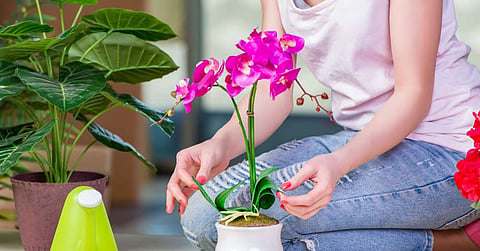
- Home
- About Us
- SOULIVITY TODAY Radio Show!
- COMMUNITY HUB
- GO SHOP by Soulivity!
- ColumnsColumns
- CultureCulture
- Lifestyle
- Contact Us!

Orchids are beautiful flowers, so it makes sense that people would want to invite the plant into their homes. However, unlike impervious options such as the snake plant or pothos, orchids are famously finicky. That’s why most people who attempt orchid care without doing research end up with a withered plant on their hands. But why is caring for orchids so hard? We explore this below, along with what to do to ensure healthy, vibrant growth.
Orchids have specific environmental needs and don’t allow for much deviation—this sets them apart from most other houseplants, which can usually survive nonideal care. So while their growth needs aren’t uncommon, their difficulty growing outside of ideal conditions is. Here are the basics of orchid requirements:
Light: Orchids require bright, indirect light, as direct sunlight can scorch their delicate leaves.
Humidity: Orchids thrive in humidity, generally preferring levels between 40 to 70 percent. Your regular home conditions may not provide sufficient humidity, particularly in the winter months when heaters dry out the air.
Water: The watering schedule can be tricky; these plants prefer to dry out between waterings, which means overwatering can quickly lead to root rot.
Soil: Using the right potting medium, such as bark or sphagnum moss, is essential for proper aeration and drainage.
Many orchid enthusiasts fall into common pitfalls that contribute to their frustrations. By far, the most common mistake is overwatering. It’s easy to think our plants need more water, but establishing a strict watering routine based on their environmental conditions is crucial.
Another error is placing orchids in direct sunlight, leading to burnt foliage. Yes, orchids love sunlight, but there can be too much of a good thing.
Lastly, ignoring their feeding needs can stunt growth. Orchids benefit from balanced, water-soluble fertilizers every few weeks during the growing season, but many people don’t provide this.
To overcome the challenges of caring for orchids, start by creating a care regimen tailored to your plant’s variety. For lighting, position your orchids close to a bright window but shield them with sheer curtains. You can also consider using grow lights if you live in a space with little natural light or don’t want to risk direct window light. There are many benefits of grow lights for indoor plants, and these extend to orchids.
Next, invest in a humidity tray or a small humidifier to help maintain the required levels of moisture in the air. Similarly, monitor your watering schedule closely; a good rule of thumb is to water when the top inch of the potting medium appears dry.
Finally, remember to feed your orchids. A specific orchid fertilizer can work wonders, offering the necessary nutrients for vibrant growth.
Caring for orchids is hard because of their strict demands, but it’s far from impossible. Now you know what to do to help your orchid enjoy a happy, healthy life in your home.
